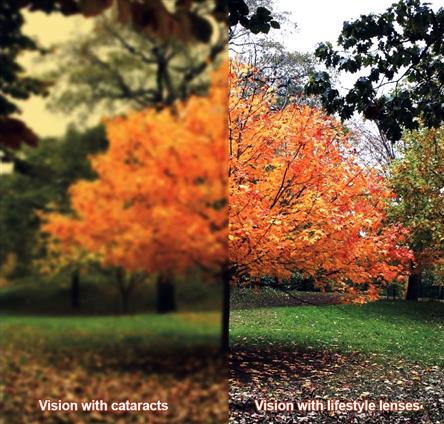What is a Cataract?

What is a Cataract?
A cataract is a clouding of the natural lens inside of the eye. Some level of cataract will develop in all of us as we grow older. At first, a developing cataract may have little or no impact on one’s daily activities.
As a cataract progresses, patients may begin to notice some of the following:
Blurred Vision
Rings or halos around point sources of light
Difficulty seeing in dim light
Glare from oncoming headlights while driving at night
Decreased perception of color
Doctors recommend cataract surgery for patients who feel that their vision has decreased to a level where they are unable to comfortably perform normal daily activities. Examples may include:
Diminished ability to read, sew, or knit
Inability to see television clearly
More difficulty reading signs while driving
Patients may limit or stop driving at night due to glare from oncoming traffic
Cary, Chapel Hill Cataracts and Cataract Surgeons
Cataract surgery is one of the most commonly performed procedures in the United States. It is a quick, painless procedure that involves the use of specialized equipment to remove the patient’s cloudy lens and replace it with a new clear lens made of synthetic material.
The goal of cataract surgery is to provide clear vision. Most patients see more clearly one day after surgery and are back to their normal daily activities within three to four days.Advances in technology provide doctors with the capability to customize cataract surgery to meet the needs of each individual patient. Some patients choose advanced technology lenses which can eliminate the need for glasses after surgery.Potential lens options include:
Standard Monofocal LensThis type of lens will yield clear vision
Patients still require glasses (either for reading or bifocal)
Toric Lens
This is a special lens which neutralizes astigmatism and offers clear distance vision.
Presbyopia Correcting Lenses
Multifocal or accommodative lenses that provide distance and near vision without glasses
May be suitable for patients with astigmatism
While cataracts are the most common cause of decreased vision in our aging population, there are other eye disorders which can cause visual dysfunction. If you are experiencing decreased vision, schedule a comprehensive eye examination to rule out other treatable causes. Call 919-595-2000 to schedule an appointment or book one online with one of our cataract surgeons.



